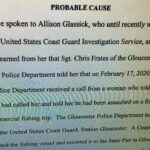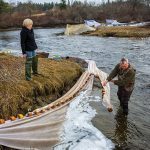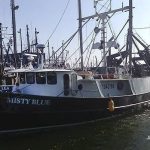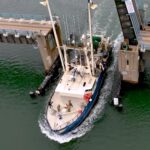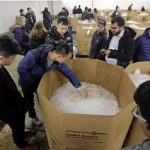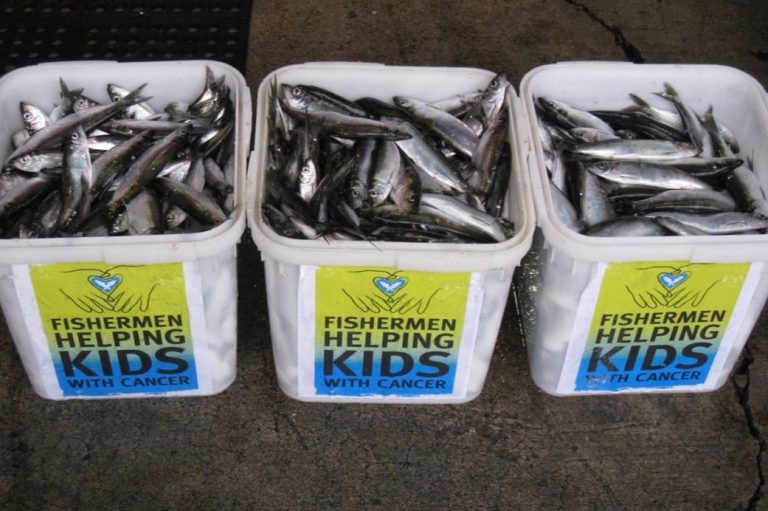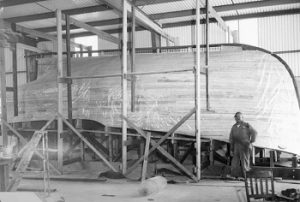Tag Archives: Bering Sea
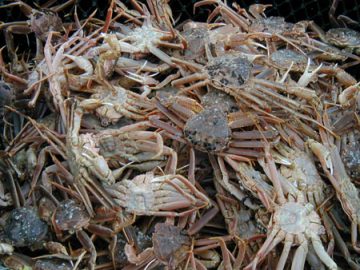
Bering Sea snow crab deemed ‘overfished’
After a sudden decline in the stock last year, federal managers have officially designated Bering Sea snow crab as overfished and are working on a plan to rebuild the stock. In October, the National Marine Fisheries Service determined that with its current low numbers, the stock of Bering Sea snow crab, also known as opilio crab, is officially overfished. However, the stock is “not subject to overfishing,” according to a report submitted to the North Pacific Fishery Management Council on the issue. That’s because the fishery removals aren’t above the level considered to be sustainable, rather it’s because the stock dropped for other reasons that scientists and managers aren’t entire sure of yet. >click to read<
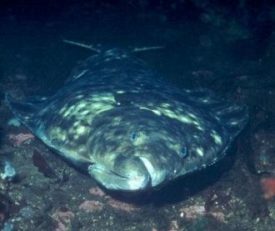
NPFMC ties limits on Bering Sea trawlers to halibut abundance
The council that manages fishing in federal waters voted to link groundfish trawl fishing in the Bering Sea and Aleutian Islands to halibut abundance today. The action caps, at least for now, a six-year debate about curbing halibut bycatch in Alaska. For many who have been following that debate, the decision comes as a surprise, since it’s expected to deal what trawlers say is a crushing blow to their fishery. >click to read< 09:10
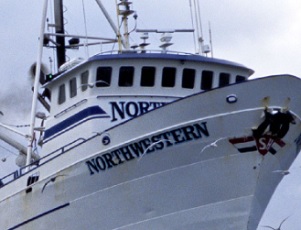
‘Deadliest Catch’: Here’s How Captain Sig Decides Where To Set Crab Traps
Commercial fishing is sometimes like a game of cat and mouse. The fish obviously move, so you can’t always count on one spot when it comes to setting crab pots out in the Bering Sea. Sig Hansen said there are ways to look for patterns in the fishing migrations. By tracking these things throughout the season, it’s easier for the fishermen to determine where to drop their crabbing pots. The Northwestern captain explains this to >Fishing.net, click to read< in a recent interview about where and how to track the good fishing. >click to read< 19:37

Dunleavy administration announces formation of bycatch task force
“We’ve had a reduction in or closure of the crab fisheries in the Bering Sea. The [North Pacific Fishery Management] Council is discussing how to deal with halibut bycatch, and I think there’s a lot of perception that there are bycatch issues associated with what’s happened with salmon in Western Alaska systems,” said Alaska Fish & Game Commissioner Doug Vincent-Lang. And, he says, his boss has taken notice. “I think the governor was hearing loud and clear that there was just a lot of noise around the issue of bycatch,” >click to read< 12:52
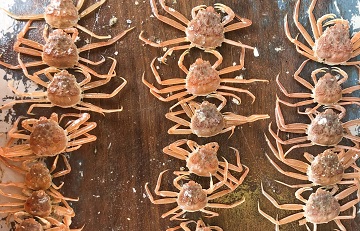
Alaska snow crab harvest slashed by nearly 90% after population crash in a warming Bering Sea
The snow crab is a mainstay of the Alaska crab boat fleet, much of it based in Washington, and the 2021-22 catch limit of 5.6 million pounds, announced Friday, is down 88% from the previous season. The 2021 fall harvest of Bristol Bay red king crab, another important source of revenue for that fleet, was canceled for this year because of too few females. The combined impacts of the closure and snow crab cutbacks are a big financial hit to crabbers who in past years have grossed more than $200 million from the two harvests. At a meeting of the North Pacific Fishery Management Council this week, crabbers called for additional restrictions in other harvests. >click to read< 09:30
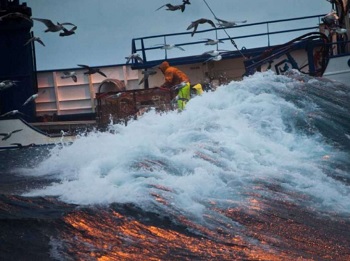
‘Deadliest Catch’ teaches us everything we need to know about life
It has existed through four presidential administrations, two American-led wars, deaths of crew members and Captain Phil Harris, overhauls to U.S. fishing regulations, and a global pandemic, which was the focus of the story line that concluded on September 21.,, After watching all 155 episodes, I found that what some call formula I call a meditation on life’s biggest challenges. Want to get in shape? Lift and throw heavy lines (strength), run in short bursts across the deck (cardio), and sort crab (calisthenics). Need to make money? Do your research, get the best team together you can, and hustle. Falling in love? Keep your eyes on the horizon and enjoy the swells. >click to read< 12:19
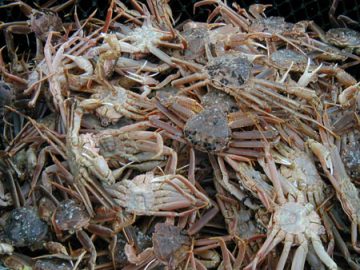
Valuable crab populations are in a ‘very scary’ decline in warming Bering Sea
The forecast for the 2022 winter snow crab season is bleak. At best, it is expected to be considerably less than 12 million pounds. That would be down from a 2021 harvest of 45 million pounds,,, The iconic Bering Sea red king crab, which can grow up to 24 pounds with a leg-span up to 5 feet, also are in trouble. In a big blow to the commercial crabbers, many of whom are based in Washington, the October harvest for these crab has been canceled, something that has only happened three times before. Overall conservation measures are expected to wipe out most of the value of the annual Bering Sea crab harvest, worth more than $160 million during the past year, according to Jamie Goen, executive director of the Seattle-based Alaska Bering Sea Crabbers. >click to read< 13:54
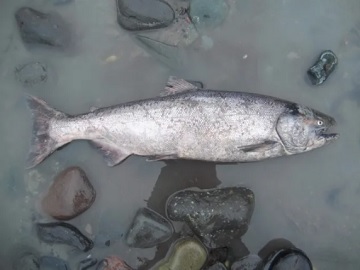
Dividing the baby
Alaska’s Kenai River is today a textbook example of the problems of managing mixed-stock fisheries right down to commercial set gillnetters protesting they catch comparatively few of the weak stock. The weak stock is in this case Chinook, or what Alaskans usually just call king salmon, and it just happens to be the same fish that gets caught as trawl bycatch in the Gulf of Alaska and the Bering Sea. To date this year, according to National Marine Fisheries Service data, trawlers in the Bering Sea have caught about 11,000 Chinook on their way to a harvest of nearly 1 million metric tons, or about 2.2 billion pounds of pollock. >click to read< 09:04

Deadliest Catch Captain Keith Colburn: “It’s a shitty job”
Deadliest Catch is already in its 15th year. The reality series about the crab fishermen on the Bering Sea near Alaska is still very popular. One of the protagonists in the Discovery series is Keith Colburn. The captain was one of the first to go to Alaska with nothing and 30 years later owns one of the largest ships: F/V Wizard.,, He can’t fish right now, because he is still struggling with the consequences of the coronavirus. “It was especially weird, “Despite corona, there was still a danger that we know all too well from the other seasons of Deadliest Catch: the sea. A huge wave hit The Wizard, damaging the iconic ship. photos, video, >click to read< 14:50
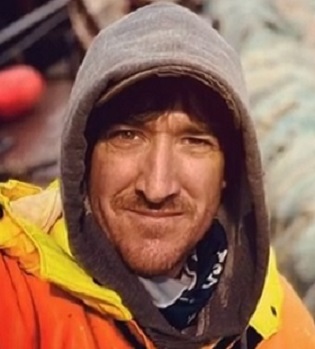
Home in Maine, Fisherman Taylor Strout reflects on the Alaska commercial fishing industry during the pandemic
From Maine, it takes him a good 24 hours and four airports to get where he is going. Taylor Strout is a mate aboard the Fishing Vessel F/V Northern Defender which was tied up at the dock in Dutch Harbor. As the crow flies, he is more than 4000 miles away from home. What is the draw? “It’s kind of a different level of fishing out here. And it was something that I’ve always wanted to do and try back when I first got into it. I had the opportunity to do it, and to try it, and I didn’t just try it, I ended up kind of falling in love with it. And continue to do it since. I love the rotation of it. You know, you go to work, you work hard, you put it in there, and then when it’s time to go home and focus on your family you get to come home and just be Dad and take care of the family that way too,” says Taylor. >Video, click to read< 12:50

Coronavirus: Bering Sea Crabbers Push For Extended Season
A group of Bering Sea crabbers say the Coronavirus pandemic has slowed their fishing season, and they want more time to catch their quota before the state shuts down their season next week. For the few boats fishing bairdi crab this year, there could be a lot at stake if they don’t have time to catch their full quota. “I’m thinking they don’t quite understand what we’re going through out here,” said Oystein Lone, captain of the 98-foot crab boat Pacific Sounder, which is based out of Dutch Harbor. >click to read< 07:55

Bering Sea Island’s Fuel Shortage Forces Crabbers South To Refuel – “I don’t think we’ve ever seen anything like this,,,
The Coronavirus pandemic has already disrupted Alaska’s winter Bering Sea fishing seasons, closing plants and adding quarantine related complications for crews. St. Paul, one of the Pribilof Islands, announced the gas ration late last month after bad weather canceled the arrival of a fuel barge, and fishermen say it’s forcing them into days-long detours for refueling. “I seem to remember we had some rations, years back, but it was nothing like this,” Oystein Lone, the captain of a 98-foot crab boat, He and his five-person crew on the F/V Pacific Sounder just started fishing for bairdi, also known as tanner crab, on the eastern side of the Pribilof Islands in the middle of the Bering Sea. >click to read<10:03
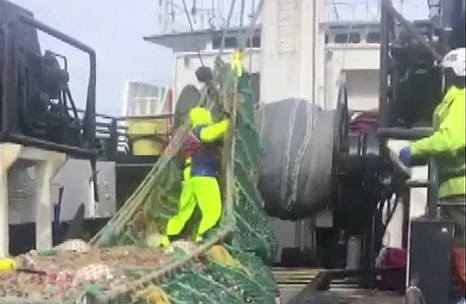
Video Interview: Life for a Mainer fishing in the Bering Sea
Taylor Strout is the son of a fisherman; fishing simply runs in his blood. He is on a boat that fishes out of Dutch Harbor, Alaska,,, Taylor is a mate aboard the Fishing Vessel Northern Defender which, when we talked, was tied up at the dock in Dutch Harbor. The Aleutian Islands split the Pacific Ocean and the Bering Sea, and they fish the Bering Sea. As the crow flies, he is more than 4000 miles away from home. “It’s kind of a different level of 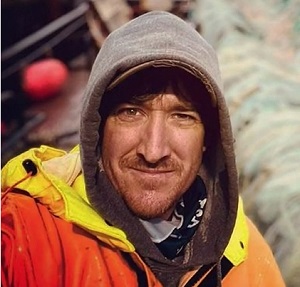 fishing out here.,, “You’re basically towing a football field behind you. You’re taking everything up to a bigger scale when you’re on some of these boats. Bigger weather, there’s bigger seas, sometimes we fish in 15 foot waves to 25 foot waves.” >click to read< 14:44
fishing out here.,, “You’re basically towing a football field behind you. You’re taking everything up to a bigger scale when you’re on some of these boats. Bigger weather, there’s bigger seas, sometimes we fish in 15 foot waves to 25 foot waves.” >click to read< 14:44

North Pacific pollock fleet preps for season after tough 2020
Skipper Kevin Ganley spent most of the summer and fall pulling a massive trawl net through the Bering Sea in a long slow search for pollock, a staple of McDonald’s fish sandwiches. The fish proved very hard to find. “We just scratched and scratched and scratched,” Ganley recalls. “It was survival mode.” Ganley’s boat is part of a fleet of largely Washington-based trawlers that have had a difficult year as they joined in North America’s largest single-species seafood harvest. >click to read< 19:28

U.S. Coast Guard admits it failed to warn Bering Sea fishing fleet about known Russian military exercises
Adm. Charles Ray told a U.S. Senate panel Tuesday that the Coast Guard knew Russia was conducting military exercises in August and failed to inform members of the U.S. Bering Sea fishing sector, Alaska Public Media reported. “This was not our best day with regards to doing our role to look after American fishermen,” Ray said. “I’ll just be quite frank: We own some of this.” The captain of the fishing vessel, Northern Jaeger, believed he had no choice but to comply and sail five hours south,,, >click to read< 13:10
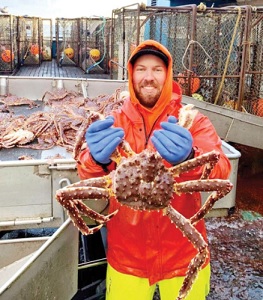
Bering Sea red king crab in high demand
Gabriel Prout, owner of Alibi Seafoods and part-owner of the F/V Silver Spray, brought 175 king crab totaling 1,000 pounds to the docks last week, which he and his crew had caught in the Bering Sea. After the F/V Silver Spray delivered their 28,000-pound quota of crab to a seafood processor, they were free to deliver the extra unblocked quota to whomever they wanted. Cars lined up for the next six hours until the crab sold out. Prout, who owns and operates the Silver Spray with his family and a friend, brought back triple the amount of crab as last year to sell at the docks. >click to read< 09:43
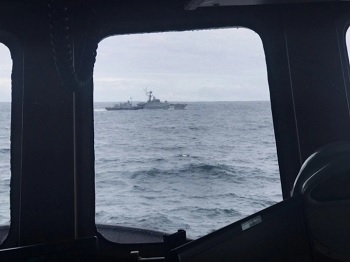
‘Are We Getting Invaded?’ U.S. Fishing Boats Faced Russian Aggression Near Alaska
Capt. Steve Elliott stood dumbfounded on the trawler Vesteraalen as three Russian warships came barreling through, barking orders of their own. On the ship Blue North, commands from a Russian plane led Capt. David Anderson to contact the U.S. Coast Guard, wondering how to protect his crew of 27.,, “The Coast Guard’s response was: Just do what they say.” This summer, Russia’s military operated in the Bering Sea, home to America’s largest fishery, where boats haul up pots crawling with red king crab, and trawlers dump nets filled with 200 tons of pollock onto their decks. >click to read< 18:26

Behind the scenes with Seattle’s crab experts
It’s king crab season in the Bering Sea. That means around 300 people, including many from Fishermen’s Terminal in Seattle, the home port to the North Pacific Fishing Fleet, fly into Dutch Harbor, Alaska, for the harvest. And when king crab season is over, many of these fishermen and women switch to bairdi crab and snow crab. Which means they’ll be busy for four to five months and there will be a lot more crab on the market. As the executive director of Alaska Bering Sea Crabbers, a nonprofit trade association that represents the crab industry, Jamie Goen knows a lot about the work that brings crab from the bottom of the sea to our tables. >click to read< 09:19

Bering Sea Crab harvests set: Kings still in decline, snow and Tanner see bump
Commercial fishermen will be allowed to harvest a total of 45 million pounds of snow crab from the Bering Sea waters this year, with 4.5 million of that set aside for Community Development Quota groups and the rest for individual fishing quota, or IFQ, holders. That’s about 34 percent larger than the limit last season, which was also an increase over the previous year. Bering Sea Crabbers Association Executive Director Jamie Goen said that’s good news for the fleet. However, members of the fleet also think that TAC could have been a lot higher had the National Marine Fisheries Service been able to conduct its regular surveys. >click to read< 08:29
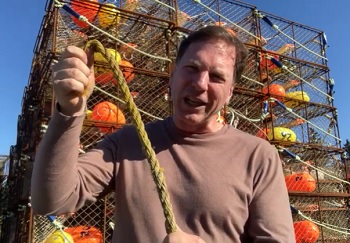
Kodiak Alaska, Crabpots Illustration, Bering Sea, King Crab Fishing, Habits, Spiritual Disciplines
I used to love the King Crab Festival which was celebrated in my hometown of Kodiak, Alaska every year. I used to love the activities, the food and the rides which pulled in to town each early summer. Many of my friends growning up had dad’s who were crab fisherman. Each year these dads and their sons would load dozens of crabpots onto their boats,, When looking at this industry and especially those nylon ropes which lifted those crabpots, there is a life and spiritual lesson which I would like to share with you all. When one looks closely at those all important ropes, there is a picture which we all need to be reminded of. What we reinforce or what we repeat is critical to our productivity and impact in our lives and in our worlds. >Video, click to watch< 08:14
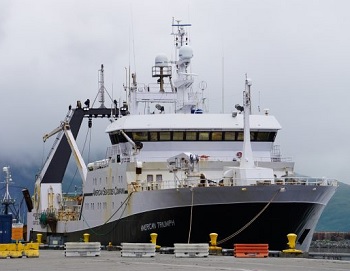
Seattle seafood company reports 6 more crew have Coronavirus in Dutch Harbor
The cases are onboard the American Triumph, which is operated by Seattle-based American Seafoods. Last month, the company announced that more than 100 crew members on three of the company’s six vessels had tested positive for the virus. At the time, experts questioned the company’s decision to mandate a five-day quarantine period, rather than the 14 days recommended by many health officials. American Seafoods subsequently said it had extended its quarantine period to two weeks. The cases announced Friday bring the total tally of positive cases on American Seafoods vessels to 117 since late May, according to spokesperson Suzanne Lagoni. >click to read< 10:18

The Things That Didn’t Make It To The Screen On Deadliest Catch – Other Fishermen Have Suffered As A Result Of The Show’s Success
Much of what fans see on screen is true to life, with a bit of Hollywood’s embellishment for dramatic effect, of course. But while fans witness everything the crew does, much of what’s captured on camera, hundreds and hundreds of hours of footage, doesn’t even make it past the cutting room floor. Furthermore, while fans see how the fishing season affects the crew, they don’t see how it affects the town or other local fishermen. While Discovery has been praised for the award-winning show, there’s plenty that goes on behind the scenes that have never made it to the screen. Deadliest Catch speaks to the lives and risks the Bering Sea crews take every year, and while truly crazy things are captured on camera, not everything is revealed to the world. >click to read< 09:15
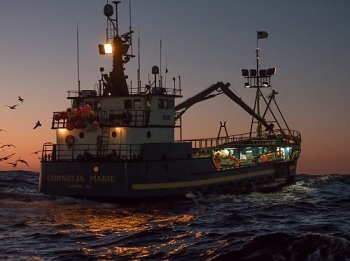
It’s Russia vs. USA For Bering Sea Crabbing Bragging Rights
It’s a rivalry that never dies – from the Cold War to Olympic hockey games to accusations of presidential election interference. Russia vs. the United States is a part of both nations’ pulse – for better or worse. The feud has spilled into the Bering Sea’s lucrative crab fishery in this season’s ongoing Discovery Channel series Deadliest Catch, which continues with new episodes into this month with an intriguing new storyline. The twist: Russia has cracked down on the country’s trend of illegal fishing and revamping its crab quota, which would dramatically drive up the market price for prized king crab. >click to read< 14:44
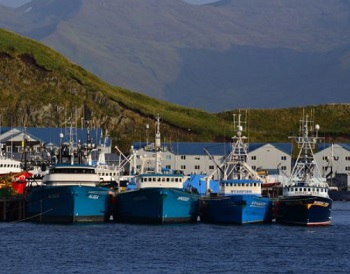
Coronavirus: Fears fuel assault on Bering Sea fishing boat, federal prosecutors charge
Federal prosecutors have charged a worker on a Bering Sea factory fishing boat with assault after he allegedly broke the eye socket of another person who criticized him for serving food without gloves during the coronavirus pandemic. Prosecutors say Maurice Young was a housekeeper and galley assistant on the 235-foot SeaFreeze America, which has about 65 crew members and is homeported in Seattle. At the time of the alleged assault, on Monday, the ship was underway about 120 miles east of the Pribilof Islands. >click to read< 16:00
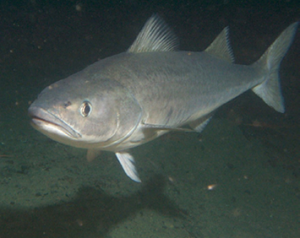
There’s a new fight over Bering Sea black cod.
Record numbers of young black cod, also known as sablefish, are swimming off Alaska’s coast; scientists estimate that this group of fish, which had huge reproductive success in 2014, is twice the size of the next-largest on record, from 1977. The small-boat fishermen who catch black cod, many of whom live in Southeast Alaska, are eagerly waiting for the young fish to grow larger and commercially valuable. But they’re getting frustrated seeing increasing numbers of black cod caught accidentally, as bycatch, by the Seattle-based trawlers that target lower-value species in the Bering Sea, like the pollock that go into McDonald’s Filet-O-Fish sandwiches. >click to read< 16:43
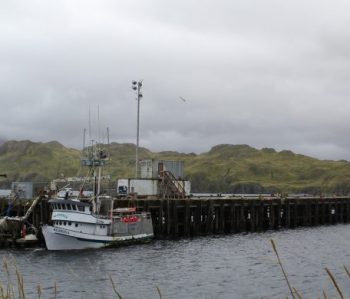
Amid a big fight for cod in the Bering Sea, can remote Adak survive?
A heap of slimy fish heads nearly filled a deep tote. Above, workers finished sorting stacks of decapitated halibut they had run through a grim mechanical apparatus. “Right here we have a guillotine blade,” said Mike Lauer, showing off the de-heading device. “We’ll sell the cheeks, and then we can use the heads for bait,” he added. Lauer is in charge of quality control for Golden Harvest, a processing plant on Adak that’s at the center of a fish war in the Bering Sea pitting two small Aleutian Island communities against large out of state fishing interests. And the implications of that fight could stretch to other coastal fishing towns in Alaska. >click to read< 21:08
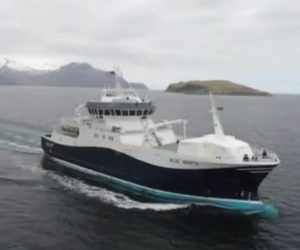
Bristol Bay Native Corporation to acquire two giants of Alaska’s Pacific cod fishery
Clipper Seafoods and Blue North Fisheries are freezer longline catchers, two giants of the Pacific cod industry. Clipper has six hook and line vessels, and after retiring one of its vessels, Blue North will have four. Now, the Bristol Bay Native Corporation is poised to acquire all of them. “Blue North and Clipper Seafoods, as of Friday last week, have officially merged together. And then BBNC’s intentions are to acquire the merged companies – the Blue North Clipper Group – on Sept. 30.” Audio, >click to read< 18:20

NPFMC takes first step toward rationalizing P-cod fishery
Pacific cod fishermen in the Bering Sea and Aleutian Islands, one of the last remaining unrationalized federal fisheries in Alaska, may finally have to cross that bridge. The North Pacific Fishery Management Council passed a motion at its meeting Feb. 9 to take action on the Pacific cod fishery, which is facing a number of issues in abundance, processing and participation. Depending on public review and the council’s action at the next several meetings, the Pacific cod fishery could see significant changes to seasons, limits and vessel participation. The motion hinges around an analysis developed on the trawl catcher vessel fishery and releases Alternatives 1, 2, 3 and 6 for public review separate from the rest. Rationalization, also known as catch shares,,, >click to read<
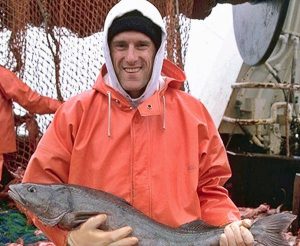
Sablefish season to open with slight increase, along with uncertainty
Alaska’s sablefish fishermen will go into the 2019 season in March with no change to their overall catch limit but some debate about the state of the stock. Sablefish, also known as black cod, regularly opens to fishing in Alaska in March, at the same time as the halibut fishery. Commercial fishermen in the Bering Sea, the Gulf of Alaska and Southeast Alaska catch them using trawls, longlines or, in some areas, pots. Fishermen landed about 13,956 metric tons of them last year between the Gulf of Alaska and the Bering Sea/Aleutian Islands fisheries. >click to read<19:55
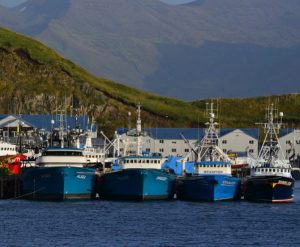
Government shutdown, if it continues, could cost Alaska’s lucrative Bering Sea fisheries
Even if the shutdown does persist, the federal government will allow the Bering Sea fisheries to start as scheduled, with an initial opening for cod Jan. 1, and a second opening for pollock and other species Jan. 20. But the fisheries are heavily regulated, and before boats can start fishing, the federal government requires inspections of things like scales — for weighing fish — and monitoring equipment that tracks the number and types of fish being caught. And the National Marine Fisheries Service, which regulates the Bering Sea fisheries, isn’t doing those inspections during the shutdown. >click to read<20:16

































